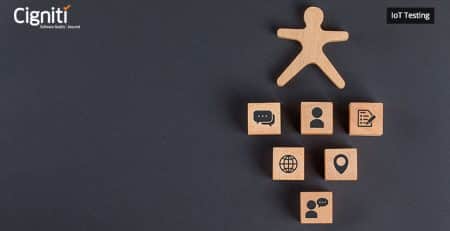Chic or Geek, are we adequately testing the Wearable Tech
Is Style winning over Substance, or is Wearable Tech here to bring us flawless experience and ease? Interestingly, Wearable Tech’s relevance and application has today gone beyond mere fashion/sports accessories. Mobile World Congress (MWC) 2016, world’s largest and sought after gathering for the mobile industry, showcased some of the hottest trends in the Wearable Tech space.
For instance, at the recently held MWC 2016, some leading tech channels and portals specifically hand-picked a portable device that could fit on a cow’s leg and help farmers to gauge the cattle’s fitness level and address the medical issues before they get chronic. This proved to be a major cost-saver for the farming fraternity, showcasing how technology can empower not just humans, but major sectors at large.
Likewise, Wearable devices are being designed and tested in organizations to help improve sitting postures, concentration, and productivity amongst employees. A research done by Goldsmiths, University of London found that using Wearable devices in office premises could help boost productivity up to 8%..
Alternately, a study that analyzed around 120 employees at a media company for a specified period revealed that using Wearable tech reduced the alertness by 9%, but at the same time the job satisfaction levels increased by 3%.
A smart watch that can give you feedback on you morning jog, a sleep tracker that can help you sleep better, a fitness tracker for your pet dog, or a heartbeat tracker that can determine your overall health, Wearable Tech is engaging on every front.
In a recent episode, BBC Click showcased some chic Wearable gadgets like key rings, phone cases and bracelets with payment chips, a ring wearable that goes with your outfit and syncs in with your iOS or Android device to alert you on calls, messages, emails, or any kind of social media notifications that you might miss if you happen to forget your phone.
As we gauge from these examples and the way the inventions are headed, everything revolves around the intrinsic needs of a human or a living creature. For instance, a dainty looking device designed for women to track stress levels, sleep and overall lifestyle related health issues. This further intensifies the need to strategize and execute a thorough testing effort to ensure flawless experience.
These gadgets are further supposed to sync in with your portable mobile devices to display the required results. Fitbit Alta, is a hot selling fitness band that tracks the steps, the running time, calories burnt, and all titbits related to the body’s fitness. The band has to not just sync in with the jogger’s pulse rate, but also with the Android that you are carrying to display the required results.
The concern is, you have spent a fortune on developing a gadget with all required features and then you realize that it is unable to sync with your Android or iOS. So, testing is not just applicable for the gadgets, but also for the Apps that orchestrate the overall impact.
Is Wearable Tech ready for the marketplace? Is the question to ponder over.
At present, the marketplace for Wearables is all gung-ho and flooded with innovative attempts to make it work with the end users. Considering this scenario, there is nothing streamlining the industry and how it should evolve in terms of performance VS commercial viability.
There are some fundamental questions raised:
- What will be the behaviour patterns of these devices?
- What is the data bandwidth required for operating the wearable apps?
- How will the devices sync with the Apps and function synchronously?
- How will the device access the Internet and other related devices for data sourcing?
- Apart from the gadget’s functionality, how will the performance get evaluated?
The solution and the only answer to these popping concerns is Load / Performance testing the applications synchronously with the devices. However, the challenge is that there is no decided or standard platform to test these devices and applications. It is still evolving, as the market evolves.
While established players like Nike+, Jawbone, and other fitness devices like Fitbit continue to provide strong reference points, there is a universe of devices in the market that mandates thorough scrutiny. And this further adds on to the challenges and nightmares of the developers and testers. Let’s check out some key challenges.
- Bubbling Marketplace: Devices are coming up in the market every day and dying out frequently due to its ineffectiveness in the market. So, there is hardly any strong reference point and any scope of predictions for the future.
- Absence of a standard platform: Software system implemented for Wearables is varied and not so structured. This requires customized coding and recurring test implementation to gauge the desired outcome.
- Legacy issues: Wearables at some point of time need to sync with redundant legacy systems that create issues in terms of performance. The major concern is, there is no particular decided approach to resolve this gap.
- Challenges with Development: Ineffective displays, inadequate data connectivity, poor battery life, ensuring water resistance, building secure interface, and most importantly, designing the right ergonomics are some of the related challenges for developers.
Connectivity and interoperability across devices is a major area of focus, as most of the Wearable Tech depends on Internet connection or a shared Wi-Fi connection to give the desired results. So, during the development of the application and device, requirements related to data connectivity should be considered. Additionally, Wearables might also impact the performance of the mobile device. It would be a tricky situation if the mobile device is connected to 5 wearables and is receiving information at the same time from all of them.
Can it really take on the load?
With no definite way, what are the most effective ways of Performance Testing the Wearables and while designing specific applications?
- Test Automation for constant vigilance: There is a constant need to confirm the performance of the devices and the results that are getting generated. The only solution is to automate the tests for continuous testing and get speedy evaluations. This will further optimize the code and ensure Continuous Integration. Furthermore, it will ensure maximum test coverage.
- Service Virtualization can speed up the process: While Service Virtualization has its own implications and relevance in the software testing space, it holds tremendous benefits in Performance Testing. By emulating the environment, the DevOps teams can leverage virtual services instead of the core production environment. This helps in constant and complete testing with the essential components possibly present in the real environment. Moreover, it helps test the interoperability of complex applications in the development process and reduces defects that could hinder the Application/products time-to-market.
- Load Testing with an Agile approach: While experimenting with new applications and devices, enterprises are looking at cost-effective approaches. The Agile process helps develop higher quality software within stringent timelines and at lowered costs. The objective is to test performance during the development process, while ensuring functional excellence at the same time. If these tests are conducted in the post-production phase, it is bound to incur high costs and kill more time.
With over 10,500 athletes from 206 countries and numerous medals to grab, Rio Olympics 2016 saw many athletes using non-conventional means to build efficiency. Tech portals reported that some Olympic athletes were considering a new wearable called Halo Sports, a pair of headphones to boost their efficiency. Wearable Tech can be found across any or every category and are coming up every day without serious monitoring and vigilance, thus, reinforcing the need for testing performance.
Cigniti’s Performance Center of Excellence (PCoE) provides end-to-end performance testing solutions to help our clients launch future proof applications with high responsiveness, availability, and scalability. We have worked with global innovators to build path-breaking devices and applications.
Connect with us for a robust test strategy and gain faster time-to-market.





Leave a Reply